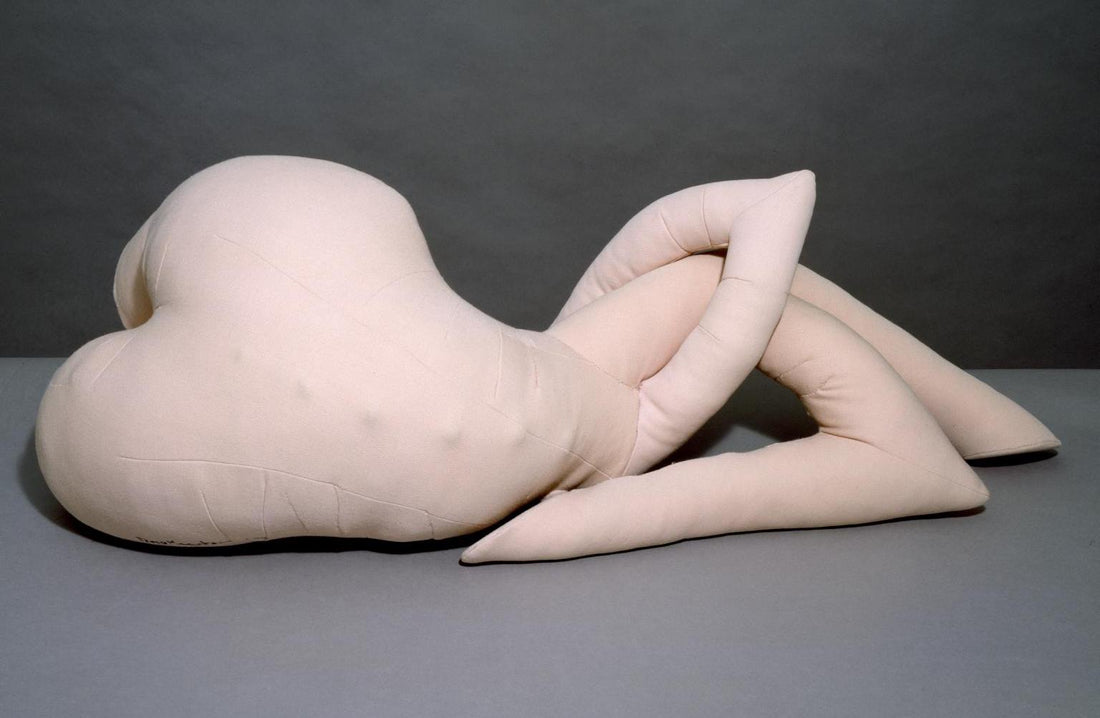
SURREALIST TEXTILE OBJECTS: DOROTHEA TANNING
Image: Nue Couchée 1969-70; Cotton textile, cardboard, 7 table tennis balls, wool and thread; © DACS, 2022. Image courtesy of Tate
Written by Deborah Nash
Recently on display in Tate Modern’s Surrealism Beyond Borders, Dorothea Tanning’s soft sculpture Pincushion to Serve as Fetish is an intriguing object. If you walk round it, the pincushion radically changes shape to reveal different orifices and protuberances so that it might resemble a bagpipe from one angle, a dwarf elephant from another, or a human organ from yet another. Made from black velvet, the white circular lines describing its swells, indents and uplifting form recall tailor’s chalk, while the sewing pins stuck in its flanks make one think of a pincushion. Its size, shape and the dichotomy of the title suggest some ritualistic juju.
In 2000, Dorothea Tanning (1910 – 2012) wrote:
“Maybe a pincushion is a far cry from a fetish. A fetish is something not exactly or always desirable in sculpture, being a superstitious if not actually shamanistic object; and yet, to my mind it’s not so far from a pincushion – after all, pins are routinely stuck in both…. [it’s] Not an image but bristling with images. And pins.”
Here, Tanning refutes the single viewpoint and celebrates the multiplicity of forms. Pincushion to Serve as Fetish sits in a distinct category alongside other tactile Surrealist textile objects – Méret Oppenheim’s fur-covered cup, saucer and spoon Object (1936) and Mimi Parent’s man’s tie made from her own hair Masculin-Féminin (1959) which appeared on the poster for the international Surrealist exhibition in Paris that same year. 
Image: Pincushion to Serve as Fetish 1965, Cotton velvet, lead, steel pins, plastic funnel, sawdust and wool. © DACS, 2022. Image courtesy of Tate
The voluptuous generous form of Tanning’s pincushion calls out to be touched and it was one of several soft sculptures she made that finds its echo in the work of other artists; for example, Nue Couchée 1969-70 recalls the work of both Louise Bourgeois and Sarah Lucas.
Although known primarily as a painter (and one like Louise Bourgeois, who lived a long and creatively productive life) Tanning had a feel for textiles. In reference to woven cloth, she said: “Something ancient and sensuous rises in me to greet and touch and manipulate this first of man's refinements […] It's supple, sly, always moving, often smiling, in fact something of an enchanter”.
